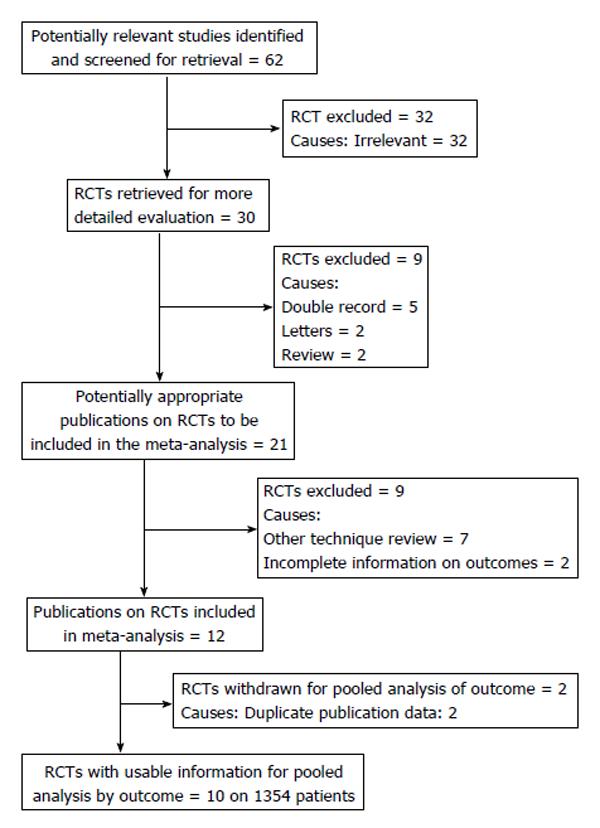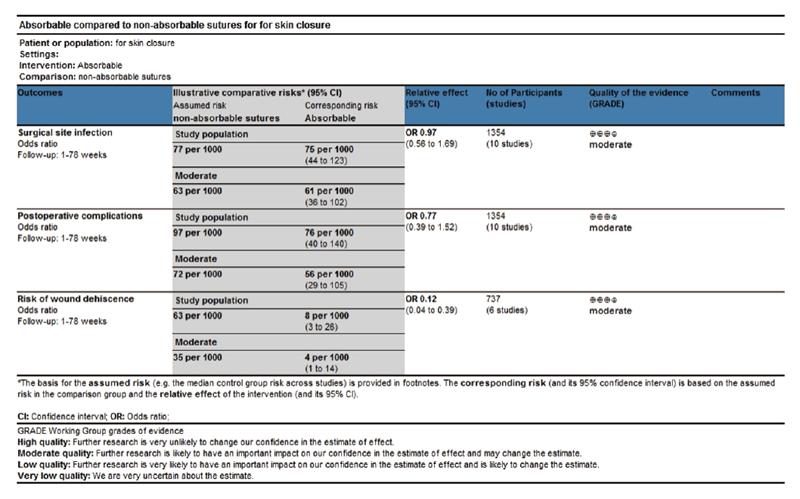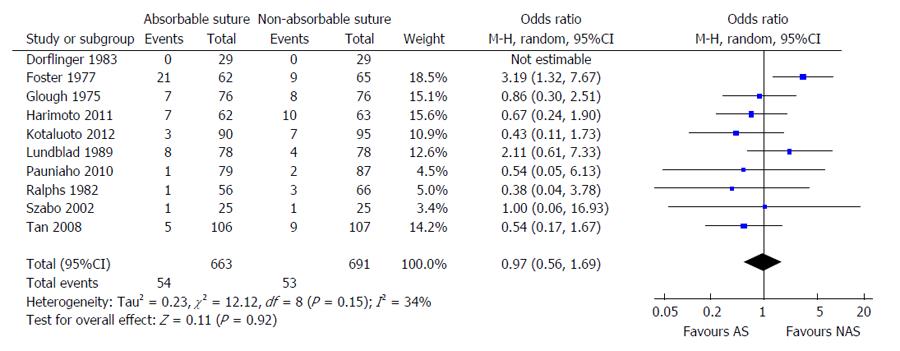Copyright
©2014 Baishideng Publishing Group Inc.
World J Gastrointest Surg. Dec 27, 2014; 6(12): 241-247
Published online Dec 27, 2014. doi: 10.4240/wjgs.v6.i12.241
Published online Dec 27, 2014. doi: 10.4240/wjgs.v6.i12.241
Figure 1 PRISMA flow chart showing trial selection methodology.
RCT: Randomized controlled trial.
Figure 2 Strength and summary of the evidence analysed on GradePro®.
Figure 3 Forest plot for surgical site infection following the use of absorbable suture and non-absorbable suture for skin closure.
Odds ratios are shown with 95%CI. AS: Absorbable stitch; NAS: Non-absorbable stitch.
Figure 4 Forest plot for postoperative complications following the use of absorbable suture and non-absorbable suture for skin closure.
Odds ratios are shown with 95%CI. AS: Absorbable stitch; NAS: Non-absorbable stitch.
Figure 5 Forest plot for the risk of wound dehiscence following the use of absorbable suture and non-absorbable suture for skin closure.
Odds ratios are shown with 95%CI. AS: Absorbable stitch; NAS: Non-absorbable stitch.
-
Citation: Sajid MS, McFall MR, Whitehouse PA, Sains PS. Systematic review of absorbable
vs non-absorbable sutures used for the closure of surgical incisions. World J Gastrointest Surg 2014; 6(12): 241-247 - URL: https://www.wjgnet.com/1948-9366/full/v6/i12/241.htm
- DOI: https://dx.doi.org/10.4240/wjgs.v6.i12.241

















